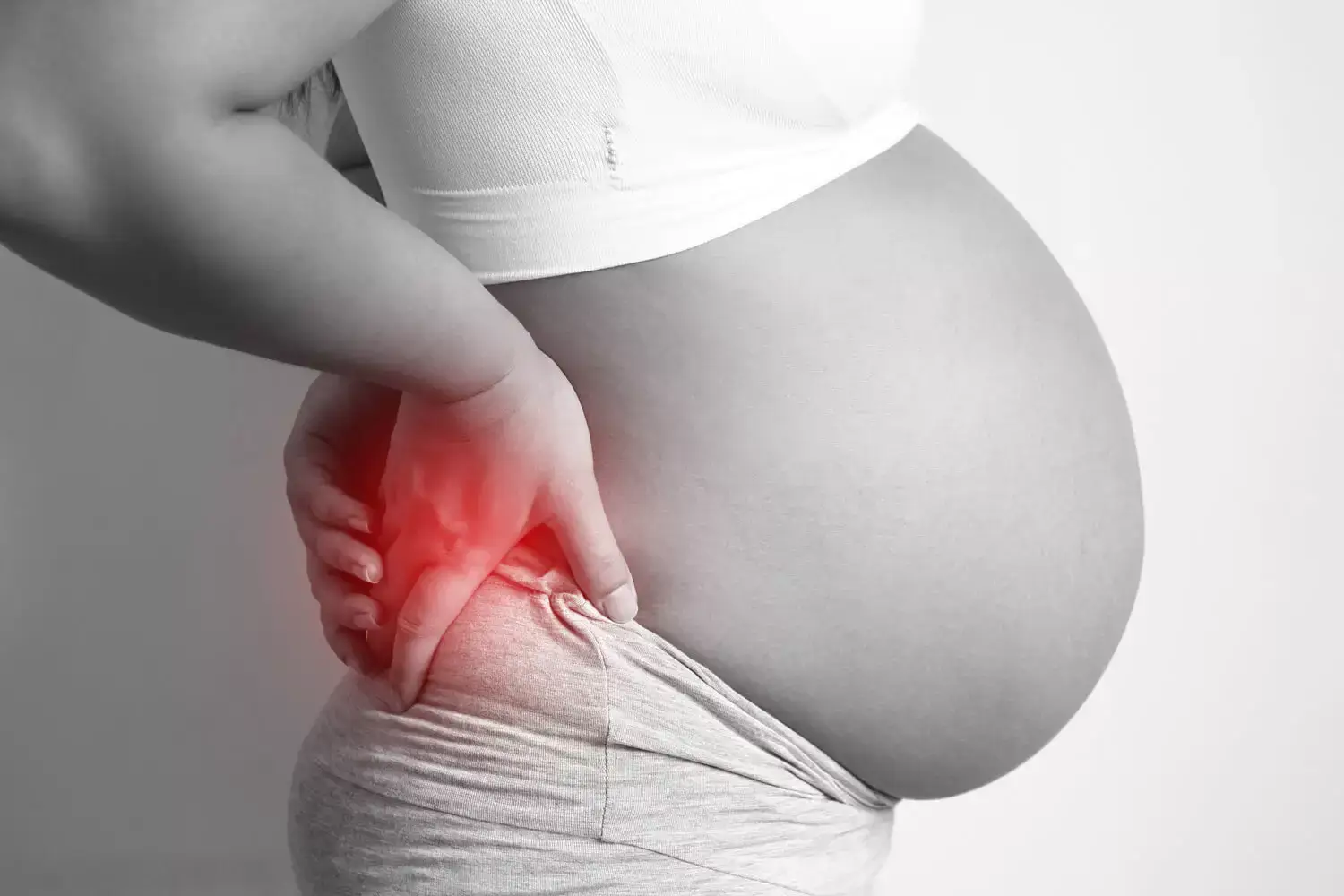Tailbone Pain During Pregnancy

Tailbone pain, also known as coccydynia, is a common complaint among pregnant women. The pain is felt at the bottom of the spine, near the tailbone. This type of pain can be caused by several factors, including the weight gain and hormonal changes that occur during pregnancy.
Causes of Tailbone Pain During Pregnancy

One of the main causes of tailbone pain during pregnancy is the added weight and pressure on the lower back. As the uterus expands, it can put extra strain on the muscles and ligaments in the lower back, leading to pain and discomfort.
Hormonal changes during pregnancy can also contribute to tailbone pain. The hormone relaxin is released during pregnancy, which causes the ligaments in the body to relax and soften. This can make the tailbone more susceptible to injury and pain.
Another cause of tailbone pain during pregnancy is a condition called pelvic girdle pain. This is a condition where the joints in the pelvis become stiff and painful, making it difficult to move and walk.
Symptoms of Tailbone Pain During Pregnancy

The most common symptom of tailbone pain during pregnancy is a dull ache or sharp pain in the tailbone area. The pain may be felt when sitting, standing, or walking.
In some cases, the pain may be severe and make it difficult for the person to sit or stand for long periods of time.
Treatment for Tailbone Pain During Pregnancy

Tailbone pain during pregnancy can be treated with a combination of self-care measures and medical treatments.
One of the best ways to alleviate tailbone pain is to maintain good posture and to avoid prolonged sitting or standing. Pregnant women should also avoid high heels, as they can put extra strain on the tailbone.
Physical therapy can also be helpful for tailbone pain during pregnancy. A physical therapist can teach exercises and stretches to help alleviate pain and improve posture.
Pregnant women can also use a pregnancy pillow to provide support to their lower back when sitting or sleeping.
In some cases, medication may be necessary to alleviate tailbone pain. Over-the-counter pain relievers such as ibuprofen and acetaminophen can be used to reduce pain and inflammation.
If the tailbone pain is severe and does not respond to self-care measures or medication, a doctor may recommend a cortisone injection to reduce inflammation and pain.
Prevention of Tailbone Pain During Pregnancy

To prevent tailbone pain during pregnancy, it is important to maintain good posture and to avoid prolonged sitting or standing. Pregnant women should also avoid high heels, as they can put extra strain on the tailbone.
Exercise during pregnancy is also important. Pregnant women should focus on exercises that strengthen the core and lower back, such as yoga and swimming.
It is also important to maintain a healthy weight during pregnancy, as excessive weight gain can put extra strain on the tailbone.
Coping with Tailbone Pain During Pregnancy

Dealing with tailbone pain during pregnancy can be challenging, but there are ways to cope with the discomfort. One of the most important things to remember is to not ignore the pain and to seek treatment as soon as possible.
Heat therapy can be a helpful way to alleviate tailbone pain. Applying a heating pad or taking a warm bath can help to relax the muscles and reduce pain and stiffness.
It’s also important to listen to your body and rest when you need to. Pregnant women should make sure to get plenty of sleep and to take frequent breaks when sitting or standing for long periods of time.
Many women find relief from tailbone pain by practicing prenatal yoga or other forms of exercise that are safe during pregnancy.
It’s also important to stay in communication with your healthcare provider throughout your pregnancy. They can help you to manage your tailbone pain, and address any other concerns you may have.
By clicking here, you can take a look at our articles about other gynecological diseases.
You can click here to watch an expert opinion on the subject.
Conclusion
Tailbone pain during pregnancy is a common complaint, but it doesn’t have to be a permanent condition. With the right care and treatment, it is possible to alleviate the pain and discomfort. Remember to maintain good posture, avoid prolonged sitting or standing, and exercise regularly. Don’t hesitate to seek help from your healthcare provider if your tailbone pain becomes severe or persistent.
How can I treat tailbone pain during pregnancy?
Tailbone pain during pregnancy can be treated with a combination of self-care measures and medical treatments. Self-care measures include maintaining good posture, avoiding prolonged sitting or standing, and using a pregnancy pillow. Medical treatments include physical therapy, medication, and in some cases, a cortisone injection.
Can exercise help to alleviate tailbone pain during pregnancy?
Yes, exercise can help to alleviate tailbone pain during pregnancy. Pregnant women should focus on exercises that strengthen the core and lower back, such as yoga and swimming.
How long does tailbone pain during pregnancy last?
The duration of tailbone pain during pregnancy can vary, depending on the cause and severity of the pain. In many cases, tailbone pain can be managed with self-care measures and medical treatments. However, if the pain persists or becomes severe, it's important to seek help from your healthcare provider.







